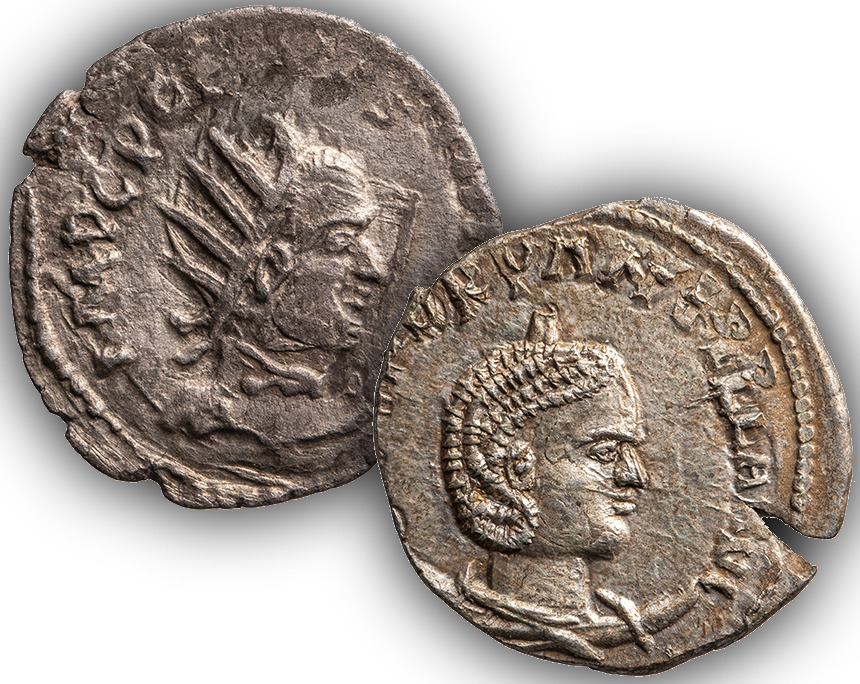Acquisition of a Highly Significant Ensemble for the Coin Cabinet in Vienna
The Kunsthistorisches Museum has acquired 22 coins of the imperial couple Regalianus and Dryantilla from the collection of Dr. Ernst Ploil. These pieces can now be viewed publicly for the first time via the Interactive Catalogue. As these coins are the only Roman coins minted in what is now Austria, they are therefore an essential part of Austria’s cultural heritage.

Left: Obverse of Regalianus, AD 260, double denarius, silver. MK RÖ 95438. Right: Obverse of Dryantilla, AD 260, double denarius, silver, MK RÖ 95443. Image files are licensed Creative Commons Attribution-NonCommercial-ShareAlike 3.0 Austria License. Münzkabinett, Kunsthistorisches Museum, ID533404 (Dryantilla) and ID533399 (Regalianus). Photographs by Photoatelier, KHM.
An Austrian collector has collected these coins over decades and has offered them for sale to the Kunsthistorisches Museum. They are as rare as the famous “Blue Mauritius“ stamp, as there are only around 160 coins of Regalian and Dryantilla in the world. Around two thirds of them are privately owned, which means they are not accessible to the public.
The history of the coins’ creation is also fascinating: As there was no mint in Carnuntum, they were simply minted on older coins. Remnants of the old coinage can often still be seen. These overstruck coins were already several decades old at the time and had a much higher silver value, making them highly sought-after in the year 260.
The Historical Context
In 260, a catastrophe befell the Roman Empire: Emperor Valerianus I fell captive to the Great King of the Sasanians Shapur I. All over the empire, numerous dignitaries or generals now declared themselves emperor – they were called “thirty tyrants“.
In Carnuntum it was Regalianus, the commander (dux) of the Pannonian legions, who renounced Rome. Although there was no mint in the garrison, he had coins struck for himself and his wife Dryantilla from specially manufactured dies, all of which were apparently overstruck on older denarii, which were also much more valuable than contemporary money due to their higher silver content. This usurpation seems to have come to an end very soon, as coins of Regalianus and Dryantilla are extremely rare.








